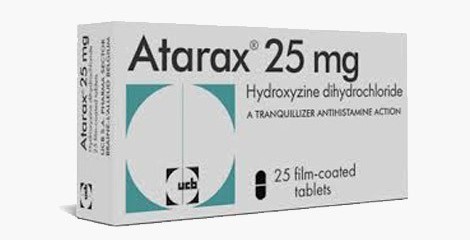Atarax is made by Pfizer and is generically known as hydroxyzine hydrochloride and is available in tablet and syrup form.
Atarax Indications
Atarax is prescribed for the relief of anxiety and tension brought about by psychoneurosis.
Atarax may also be used for the containment of pruritus due to allergic reactions such as chronic urticaria and contact dermatitis.
Atarax may be used as a sedative when used as a premedication following general anesthesia.
Atarax Warnings
Studies of Atarax in pregnant humans have not yet been studied however, studies on animals have shown that Atarax induces fetal abnormalities in pregnant mice, rabbits, and other animals.
It is not also known whether the contents of Atarax are passed into human milk. Talk with your doctor first before considering breastfeeding.
Drowsiness is the main consideration when taking this drug and activities such as driving or operating machinery should be avoided.
Patients are also not advised to repeatedly take CNS depressant drugs such as this.
Atarax Intake Guidelines
Follow your doctor’s instructions when taking Atarax. Never deviate from the doctor’s instructed intake instructions.
Atarax Dosage
For the treatment of anxiety and tension, the dose is 50-100 mg for adults, 50 mg daily divided into two doses for children.
For the management of pruritus, the dosage for adults is 25 mg and for children, it is 50 mg divided into two doses.
For the usage of Atarax as a sedative, the dose is 50-100 mg in adults and 0.6mg/kg in children.
The dosage described above may be increased or decreased depending on your doctor’s assessment.
Atarax Overdose
The most common symptom of Atarax overdose is hypersecretion. If overdose happens, the patient should be made to vomit, if he/she has no urge to vomit, it should be induced. Another relief is to immediate gastric lavage. Immediately seek emergency medical attention while continuing to monitor the patient’s vital signs.
Sign up here with your email



ConversionConversion EmoticonEmoticon